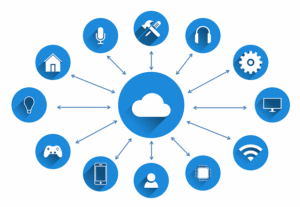Internal linking automation is transforming SEO for affiliate blogs by streamlining link creation based on content relevance and user behavior. Tools like Ahrefs, SEMrush, and Moz optimize website structure, enhance search rankings, and improve user experience through data-driven insights. Customization options ensure contextually appropriate links while manual oversight maintains a seamless navigation experience. Tracking CTRs, time spent on page, and bounce rates refines SEO strategies for better performance. The future of affiliate SEO lies in automated internal linking for enhanced content strategy and user engagement.
Internal linking is a powerful SEO strategy, and for affiliate blogs, it’s an untapped resource. Unlocking the potential of internal linking automation can skyrocket your website’s visibility and user engagement. This article guides you through the process, from choosing the right tools to implementing smart link strategies. We’ll explore top plugins, optimization tips, and performance tracking methods, ensuring your affiliate blog stays ahead in the digital landscape. Discover how automation can revolutionize your internal linking game.
- Unlocking SEO Potential: Internal Linking Automation
- Top Tools for Efficient Internal Link Building
- Strategies to Optimize Plugin Selection
- Enhancing User Experience with Smart Links
- Measuring Success: Tracking Internal Link Performance
- Future Trends in Affiliate Blog Internal Linking
Unlocking SEO Potential: Internal Linking Automation

Unleashing the full potential of your website’s SEO is now easier with the power of internal linking automation. This innovative strategy streamlines a crucial aspect of search engine optimization that was once time-consuming and complex. By automating the process, you can ensure every page on your site is interconnected, enhancing user experience and boosting search rankings.
Imagine a tutorial or tips guide that not only creates relevant links but also optimizes them for maximum impact. Automated tools can intelligently distribute internal links based on content relevance, keyword density, and user behavior analytics. This optimization goes beyond basic link placement; it ensures each link adds value by directing readers to the most pertinent content. The result? A more connected site structure that captivates visitors and entices search engines to award higher rankings.
Top Tools for Efficient Internal Link Building

In today’s digital era, effective internal linking automation is a crucial aspect of SEO strategy for any affiliate blog. Tools designed to streamline this process can significantly enhance your site’s performance by optimizing content connectivity and navigation. Plugins like Ahrefs, SEMrush, and Moz offer powerful features for identifying relevant internal links, analyzing anchor text distribution, and monitoring broken links—all essential components of an optimized internal linking automation strategy.
These platforms provide in-depth insights into your website’s structure and help you create a robust internal linking automation tutorial tailored to your content needs. By implementing strategic optimizations based on data-driven analyses, bloggers can ensure their sites are not just visible to search engines but also user-friendly, fostering a seamless experience that encourages longer stays and higher conversion rates.
Strategies to Optimize Plugin Selection

When selecting a plugin for internal linking automation SEO, it’s crucial to align your choice with your site’s specific needs and existing structure. Not all plugins are created equal, so a strategic approach is essential. Start by evaluating your current content layout and identifying areas where automatic internal links could enhance user experience and boost search engine optimization (SEO). Consider factors like content type, category hierarchy, and the frequency of keyword usage to inform your decision.
For an effective internal linking automation strategy, look for plugins that offer customization options tailored to your niche. This allows you to create targeted link profiles that reflect your brand’s unique voice and audience engagement goals. Additionally, focus on tools that prioritize quality over quantity in link generation, ensuring the internal links are relevant and contextually appropriate. By balancing automation with manual oversight, you can achieve optimal internal linking automation optimization while maintaining a seamless user journey across your website.
Enhancing User Experience with Smart Links

In today’s digital era, enhancing user experience (UX) is paramount for affiliate SEO blogs aiming to boost their search rankings and drive conversions. One powerful strategy lies in leveraging internal linking automation. By automating the process of creating and placing strategic links within your content, you can ensure a seamless navigation journey for readers while simultaneously instructing search engines about the hierarchy and relevance of your pages. This not only improves UX but also aligns with search engine algorithms that favor user-friendly websites.
Smart link tools offer valuable internal linking automation tips, enabling you to optimize your blog’s structure efficiently. These plugins provide intuitive interfaces where you can quickly identify relevant posts to link back to, ensuring each anchor text is contextually appropriate. Following an internal linking automation tutorial can help you unlock the full potential of these tools, allowing for continuous improvement and refinement as your blog evolves.
Measuring Success: Tracking Internal Link Performance

Measuring the success of your internal linking efforts is crucial for optimizing your SEO strategy. By tracking the performance of your internal links, you gain valuable insights into what’s working and what needs improvement. This data-driven approach allows you to refine your internal linking automation strategy and enhance overall site navigation.
One effective way to measure success is by analyzing click-through rates (CTRs) on internal links. A higher CTR indicates that your audience finds the linked content valuable and relevant, encouraging them to explore more of your site. Additionally, keeping an eye on user behavior, such as time spent on page and bounce rates, can help you understand how well your internal links are guiding users through your content. An internal linking automation tutorial can guide you in setting up these crucial metrics and creating a comprehensive strategy that aligns with your SEO goals.
Future Trends in Affiliate Blog Internal Linking

As the digital landscape evolves, so too does the role of internal linking in affiliate SEO blogs. One of the most promising future trends is internal linking automation. By leveraging advanced tools and plugins, content creators can streamline their internal linking strategy, ensuring every piece of content is interconnected with relevant resources throughout the blog. This not only enhances user experience but also provides search engines with a clear picture of your site’s architecture, boosting SEO performance.
Beyond automation, a data-driven internal linking automation optimization approach is gaining traction. By analyzing click patterns and reader behavior, bloggers can identify high-value pages that deserve stronger internal links and optimize their strategies accordingly. This dynamic approach to internal linking automation SEO promises to deliver even greater results in the years to come, as content becomes more personalized and optimized for both users and search engines alike.
